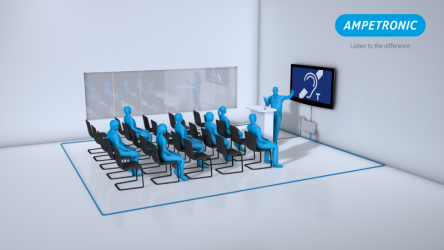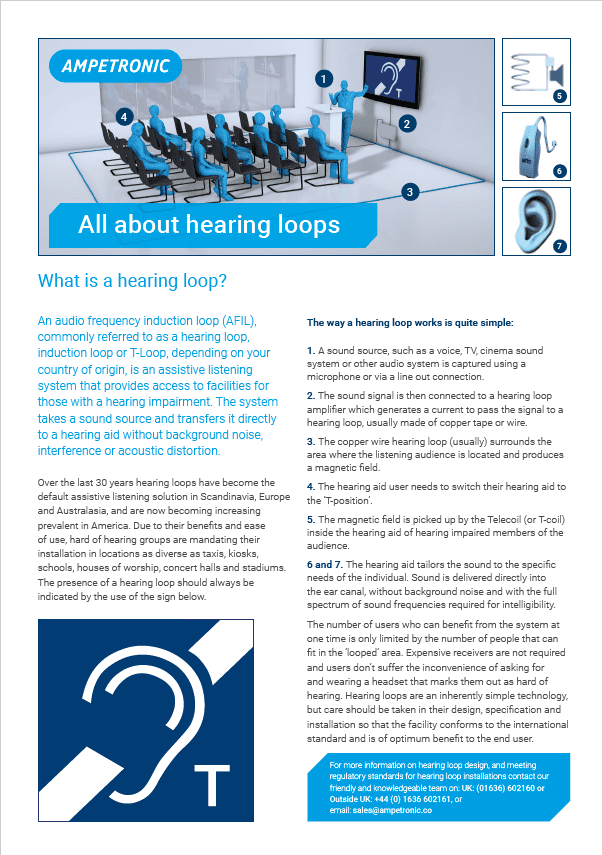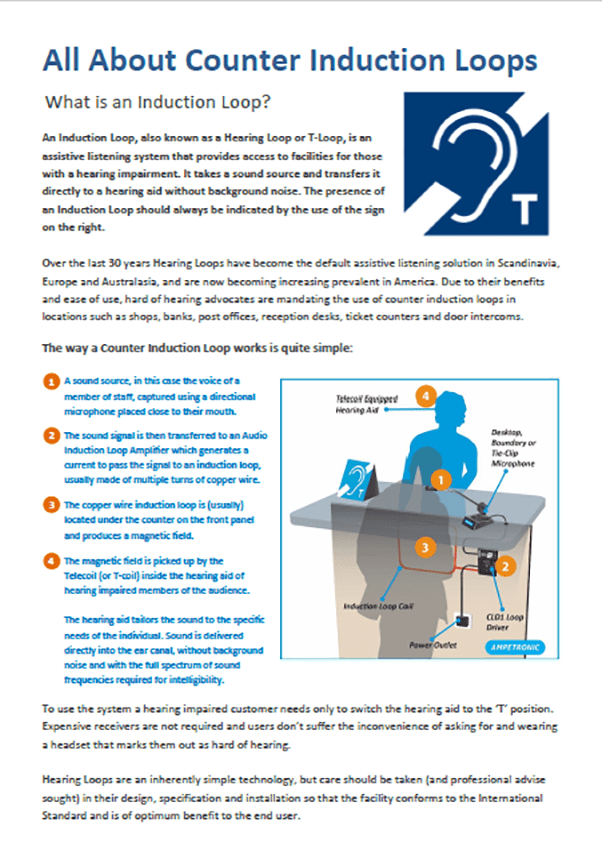Introduction to hearing loops
What is an induction loop, hearing loop, T-Loop or AFIL system?
A hearing loop, sometimes referred to as an induction loop, T-Loop or an audio frequency induction loop (AFIL), is an assistive listening system that provides access to facilities for those who experience hearing loss and use a hearing aid. It takes a sound source and transfers it directly to a hearing aid without background noise, interference or acoustic distortion.
Watch the video opposite or click below to download a copy of our guides, which feature explanations of how hearing loop systems work and answers to the most commonly asked questions.
The benefit of a correctly installed hearing loop system.
As shown above a hearing loop system transmits an audio signal directly into a hearing aid via an electromagnetic field. This greatly reduces background noise and reverberation that can reduce clarity of sound.
This demonstration shows the difference hearing loop systems can make to an end user.
Over the last 30 years induction loops / hearing loops have become the default assistive listening solution in Europe, Scandinavia and Australasia, and are now becoming increasing prevalent in America. Due to their benefits and ease of use, hearing loss groups mandate their installation in locations as diverse as taxis, kiosks, schools, houses of worship, concert halls and stadiums.
On this site you will find a broad overview of what assistive listening systems are and what applications they are suited to. More specifically, why loops are important, how they work, where they can be installed and the relevant operational Standards that ensure that an installed loop delivers a genuine benefit to people who experience hearing loss.
However, if you have any questions please do not hesistate to contact us.
Equality of access for people with hearing loss
We also highly recommend viewing the
Equality of access for people with hearing loss seminar
as this provides some useful background to the requirements for assistive listening systems.







